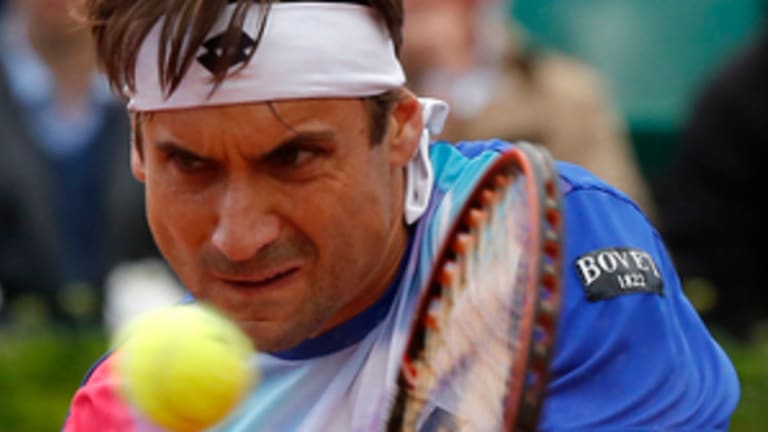Sometimes the signs end up pointing in the the wrong direction.
David Ferrer came into his quarterfinal with Rafael Nadal at the French Open having won two of their last three matches, and their most recent one, on clay in Monte Carlo, in straight sets.
Ferrer continued to be the better player through the first set on Wednesday. He started by playing inside the baseline and pounding his forehand into Nadal’s backhand. In the third game, Ferrer guessed right on a Rafa passing shot at the net for a volley winner and eventually broke. A few games later, with Nadal serving at 4-5, down set point, Ferrer guessed right again, ran down a Rafa volley, and hit a cross-court passing shot winner.
In the vast majority of their match-ups, Nadal has been the one who has out-anticipated Ferrer, the one who has come out on top in the cat-and-mouse points, as well as the crucial points. In Monte Carlo, though, Ferrer had turned that dynamic around, and he was doing it again in Paris early. If Ferrer, rather than, Rafa, was winning those up-for-grabs points, it looked highly possible that he was going to win this match as well.
Nadal must have realized that he was in a losing dynamic, too, because he made a determined and ultimately successful effort to change it at the start of the second set. He began playing closer to the baseline on his returns, and going all-out to run around and hit forehands. At 1-1, he broke with a backhand winner that painted the sideline. But he wasn’t out of the woods yet. With Nadal serving at 3-2, Ferrer came up with his own backhand winner down the line to reach 15-40.
Then Ferru hit the shots that doomed him, two regulation forehands that he sent long to bring Nadal back to deuce. Ferrer knew he had to press hard with his forehand, but there was a price, and he paid it with those two mistakes, as well as the 48 other errors he committed on the day. Nadal eventually held serve.
